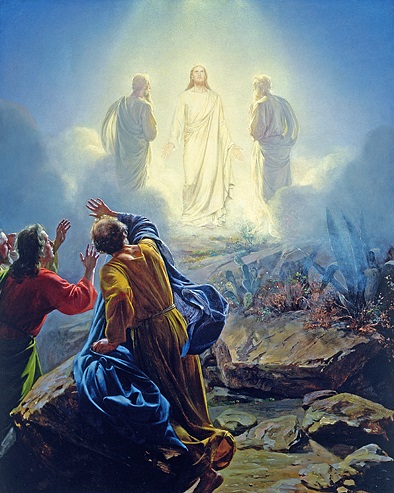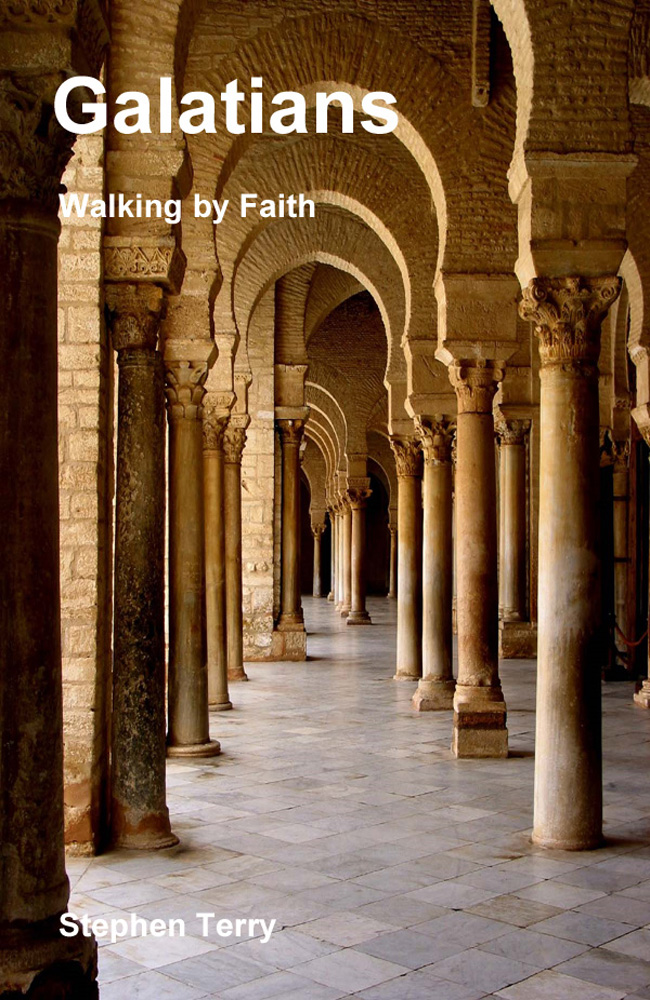Crucified
and Risen
Stephen
Terry
Commentary
for the June 25, 2016 Sabbath School Lesson
 “For
we did not follow cleverly devised stories when we told you about the coming of
our Lord Jesus Christ in power, but we were eyewitnesses of his majesty. He received
honor and glory from God the Father when the voice came to him from the
Majestic Glory, saying, ‘This is my Son, whom I love; with him I am well pleased.’
We ourselves heard this voice that came from heaven when we were with him on
the sacred mountain.” 2 Peter 1:16-18, NIV
“For
we did not follow cleverly devised stories when we told you about the coming of
our Lord Jesus Christ in power, but we were eyewitnesses of his majesty. He received
honor and glory from God the Father when the voice came to him from the
Majestic Glory, saying, ‘This is my Son, whom I love; with him I am well pleased.’
We ourselves heard this voice that came from heaven when we were with him on
the sacred mountain.” 2 Peter 1:16-18, NIV
Peter here speaks of a personal experience recorded by
Matthew,[i] but not witnessed by him.
Jesus went up on a mountain and took John, James and Peter with Him. While on
that height, He was transfigured, appearing glorious. At the same time, Moses
and Elijah appeared and were speaking with Jesus. While this was happening, a
cloud covered those three, and the trio of disciples then heard a voice
speaking from the cloud, stating “This is my Son, whom I love; with him I am
well pleased. Listen to him!” Then suddenly the experience ended with the
disciples face down on the ground and everything back to normal. Jesus then
cautioned them not to share what they had seen with anyone until after He was
raised from the dead.
How perplexing this must have all seemed to the
awestruck disciples. Even today the story has an air of enigma about it. Why
did this take place at this time and location? Why these three disciples and
not the rest? Why keep it secret until much later? Why were the disciples so
obtuse that they did not understand or at least ask about what Jesus meant by
being raised from the dead? Why, if John was there, does he not mention it in
his gospel? In fact, of those who were there, only Peter mentions it in the
epistle passage above, and even he does not provide as much detail as Matthew.
Some questions theologians have sought to address over
the centuries. For instance, the question of why Moses and Elijah were the ones
present with Jesus in his glorification has long been felt to be representative
of two different classes of people that Jesus will return for in the Parousia.
Moses is felt to represent those who die and are then resurrected from their
graves when Jesus returns.[ii] On the other hand, Elijah
is felt to represent those who will be taken to heaven while still living, just
as Enoch and Elijah were. Enoch was walking home with God[iii] and Elijah went riding
in a fiery chariot.[iv]
These may well represent that generation which is alive at the time of the
Second Coming who will not have to face death before ascending to Jesus.
Perhaps this is why Jesus cautioned about sharing this, because these things
may only make sense in the light of His own resurrection.
The disciples, including these three, were astonished,
after seeing Jesus cruelly murdered upon the cross, to discover that His tomb
was later empty. While all the disciples had abandoned Jesus in the Garden of
Gethsemane[v] and were perplexed as to
where they should go and what they should do, two faithful and practical women
were doing exactly what should be done. They were doing their best to serve Jesus
according to His present need. They went to the tomb to properly anoint His
body. As a result, their desire to serve was blessed and a resurrected Jesus
appeared to them. They became the first to behold His resurrection. Interestingly,
Mark says they only saw a young man in a white robe and does not identify this
as Jesus. Although the words spoken are the same words attributed to Jesus by
Matthew, Mark has them being spoken about Jesus rather than by Him.[vi] Mark also states that the
women were too afraid to tell anyone what they had seen. Later texts from
approximately the 5th Century on add to Mark’s Gospel that they told
the disciples what they had seen.
This may have been in order to harmonize with the Gospel
of Luke. This is possible for several reasons. First, Mark is commonly thought
to have been written before Matthew and Luke, since it offers us the least
amount of information. Second, because Luke and Matthew offer more information,
they are thought to have drawn on Mark’s Gospel as well as additional material
from other sources. Third, because the additional material at the end of Mark
does not appear until the 5th Century, it may have been added to
further harmonize the synoptic gospels. This seems especially possible when one
understands that this period in ecclesiastical history is fraught with
movements attempting to unify the faith under one standard, eliminating
discrepancies both real and apparent.
In any event, if we take Luke’s Gospel as primarily authoritative
on this matter, the women told the disciples, and Peter ran to the tomb to verify
their story.[vii]
This does not resolve all discrepancies as Luke has more than two women going
to the tomb. Also while Luke and John both seem to indicate two angels were at the
tomb as opposed to Mark’s one angel, John also backs up Matthew in stating that
at least one woman, Mary, spoke with Jesus.[viii] There seems to be
significant confusion over the numbers of the parties involved at Jesus
resurrection and the identities of those parties. The one thing that all
accounts seem to agree on is that Jesus rose from His tomb sometime early on
Easter Sunday, having rested in the tomb over the Sabbath[ix] according to the
commandment.[x]
This ability to rise from the dead is fundamental to the
Christian faith. The bodies of Mohammed, Buddha, Confucius, and every other
founder of a distinct religion continue to lie in their burial places to this
day. Only the resurrection of Jesus left behind an empty tomb. This coupled with
the resurrection of Jesus purportedly being witnessed by hundreds of people,
not just a select, cloistered few makes that resurrection significant. By the 4th
Century, it was widely proclaimed by the church from the various bishoprics
throughout the Byzantine Empire. Alexandria, Jerusalem, Antioch, and
Constantinople as well as the rest accepted the resurrection as unquestionable
fact. This may be in part because of the heavy influence of Pauline theology on
the early church. How this came to be is quite remarkable.
Jesus had taken James, John and Peter on the Mount of
Transfiguration per Matthew’s account. These may well represent the three other
primary schools of theology: Jacobine, Johannine, and Petrine. While in the
case of John and Peter, this may be taken as a literal representation, in the
case of James this may be symbolic as the James of the Epistle is likely not
the same James. Nonetheless, in spite of three schools of theology derived from
the disciples selected by Jesus, we find instead that a new, inclusive theology
founded by Saul of Tarsus, renamed Paul, begins to take hold throughout the
Roman Empire. The others, perhaps because of their heavy connection to Judaism,
seem unable to carry forward the demands of the global gospel commission set
forth by Jesus in Matthew’s Gospel.[xi] According to Luke,
writing in the book of Acts, God tries to open Peter’s eyes to the possibility
of an inclusive message,[xii] but he falls flat on his
face not long after when he chooses not to eat with non-Jews.[xiii] In doing so, the
relevance of his ministry may have diminished outside Israel. Paul clearly took
the lead in ministering to the vast Gentile host and brought them a message of freedom
from condemnation. This message was not far from basic Johannine theology.[xiv] In fact, it is possible
that Paul may have even influenced John in this regard for John’s Gospel was
likely written after the death of Paul in Rome. In contrast the primary
Epistles of Jacobine and Petrine influence were likely written before the
powerful influence of Paul’s martyrdom, so they do not share this common thread
of non-condemnation. In spite of these differences and the heavy influence of
Pauline theology on some parts of its own systematic theology, the Roman
Catholic church often identifies Peter and not Paul as the first Pope or Bishop
of Rome, primarily because of the “keys of the kingdom” passage in Matthew’s
Gospel.[xv]
Perhaps this is why the state of the dead is distinctly
different in Catholicism, with its concepts of purgatory and hell, from that
presented by Paul. Pauline theology teaches that the dead sleep in their graves
until the return of Jesus at the Second Coming.[xvi] He feels this is so fundamentally
tied in with the hope that arises from Christ’s own resurrection that if Christ
is not raised then everything else falls apart.[xvii] If either the
resurrection of Christ or the resurrection of the dead is denied, then neither
is possible per Paul’s reasoning. No matter what we believe about law, grace,
gifts or fruits, it all becomes vanity without the hope of the resurrection.
Man becomes little more than the brute animal without purpose beyond
procreation, living and dying only to make more humans in the hope that some
evolutionary change brought about through natural selection will make it all
worthwhile. However, even if we accept the probability of such change in the
past and the possibility of additional change in the future, we still remain
only procreating animals perpetuating our species until some quirk wipes us out
as completely as other extinct species. The hope of the resurrection and
subsequent restoration lifts us beyond that primal level into something more, a
unique creation with a special destiny. Our ability to choose that hope may even
argue strongly for its existence.
